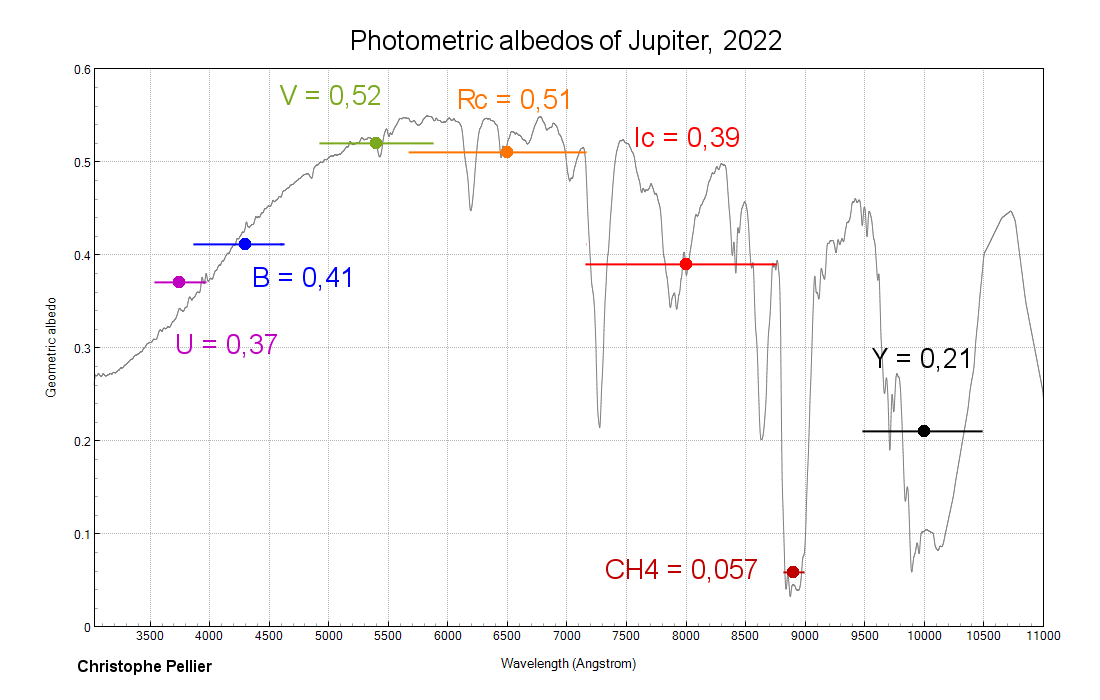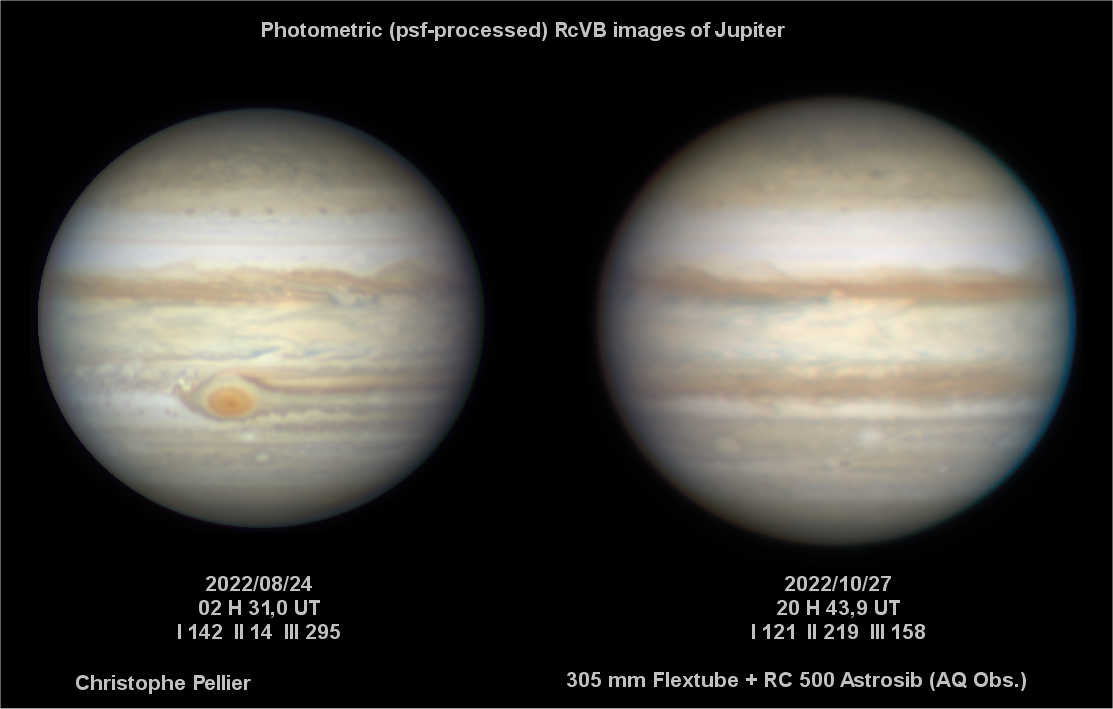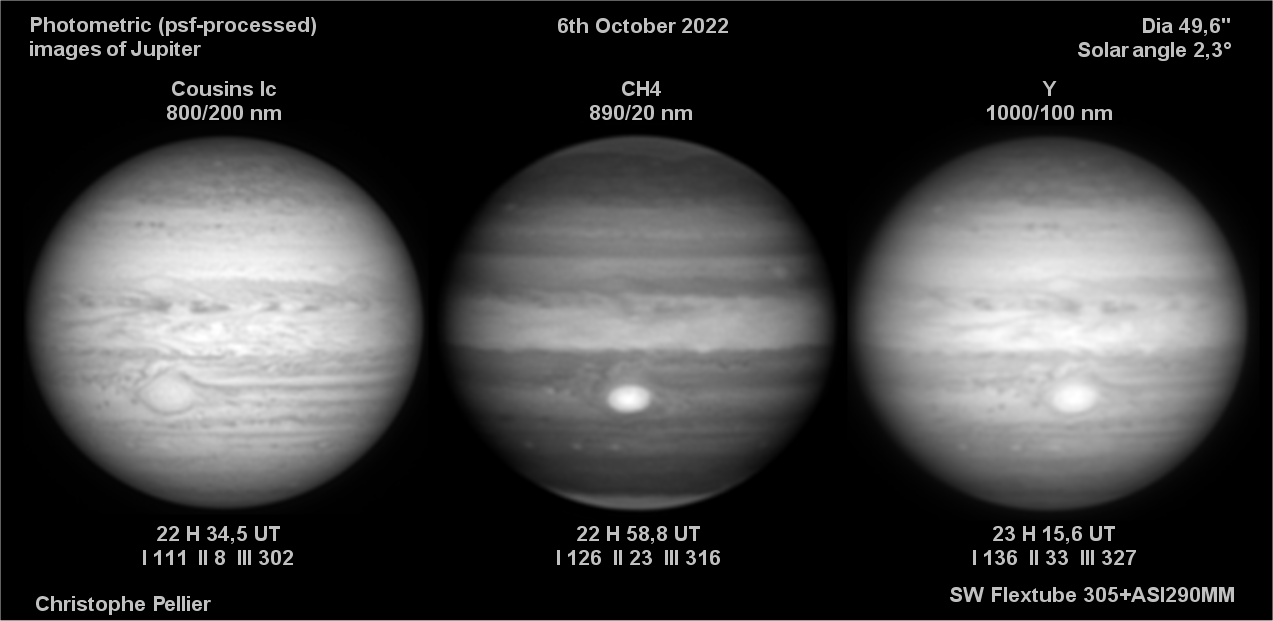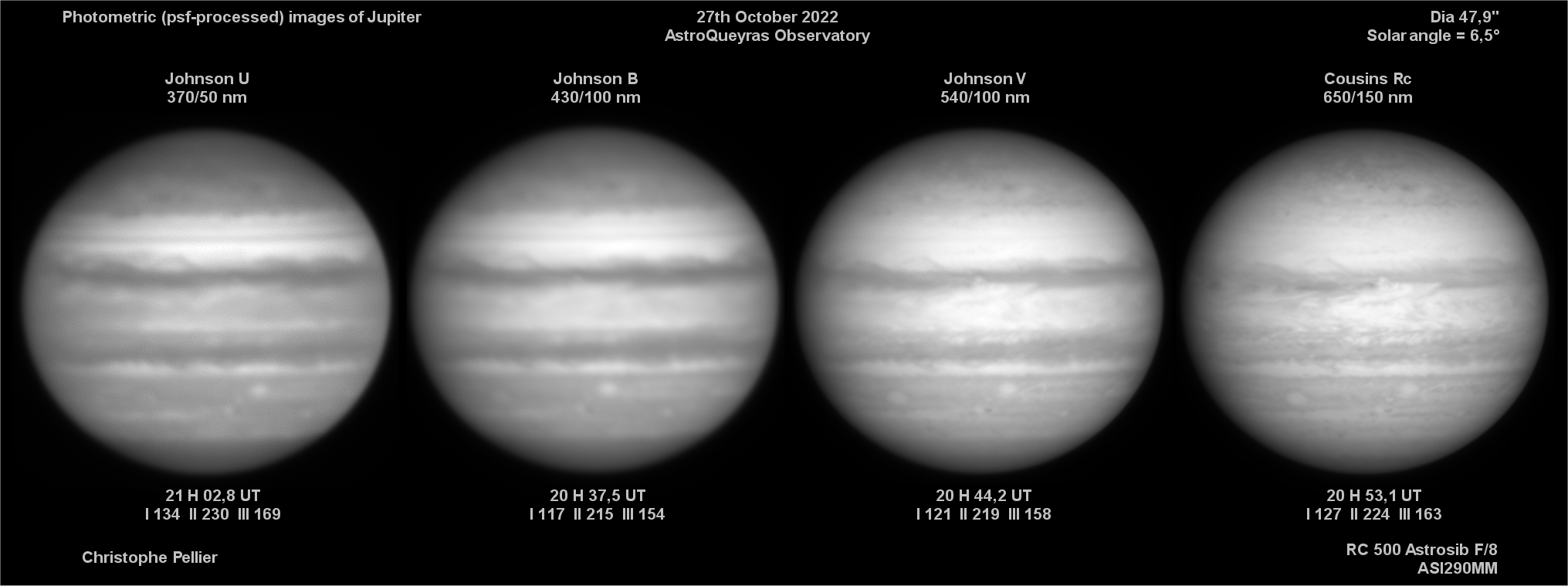| The colors of Jupiter in 2022 - Albedos of the planet and photometric images in 2022 by Christophe.P |
Please find attached the first results of my jovian color analysis from the past opposition. As last year, I am going to send 3 messages since it is a lot of work and data! Here are the global results, will follow the north-south profiles (2nd) and photometric spectra of individual features (3rd). I am attaching a bunch of photometric images of the GRS hemisphere, the opposite hemisphere, and RcVB colors ; they have been psf-processed because I find that the psf views greatly enhance the view of details and contrasts without adding artefacts or over-contrasts like in the fully processed usual images. Of course, all analysis are performed on purely photometrics one (stacked, unfiltered). Methods The methods I have used have changed a little bit from 2021. I have again used the "galilean moons reference method", but stlightly less. Results were a bit less good than in 2021, just confirming for me that Europe is the best reference, and that the method does not look to work for the U band. To the contrary of 2021, I have had more success with the star photometry method. I am still walking over a partially non orthodox path, but I hope to improve again for the next opposition. My method implies to take 3 stars (blue/yellow/red) in every bands, and manually adjust the color transformation coefficient so that the magnitudes of the yellow star are found from both the red and blue with the same values, and then using those values on the planet from the 3 stars. Results from last year on other planets shew that it does work although I would hardly be able to explain why (this is for example how I found my Mars magnitudes from December 9th, 2022). Magnitudes for the IR bands come essentially from results for the nights of October 6 (results has been sent previously), and in UBVR from November 9 (unsent, I have just been lazy). Results The geometric albedo of Jupiter is found to be unchanged from 2021, except for U (35% to 37%) and Ic (41% to 39%). While it could come from a real change, I think that this is the result of inaccuracies or errors from the 2021 results, especially for Ic, since I don't think that the planet could lose 2 points of albedo in that band. Results for the north-south scans support this idea. While it may be surprising that the values remain unchanged since there have been some notable evolutions, the comparison of the scans (2nd message) look to reveal that there have been a kind of "compensation" between the EZ (that has brightened again) and the southern latitudes (dimming either due to real changes or to the decreased polar axis tilt?). I did not include results from the z' band this time, they are still quite incoherent, moreover, it is not really interesting for the study, being too wide and not different enough in aspect from the Ic band. I will describe more about the color changes in the next messages, but I have successfully for example measured the brightening of the EZ as well as the reddening of the GRS :)





ALPO-Japan Latest
Jupiter Section